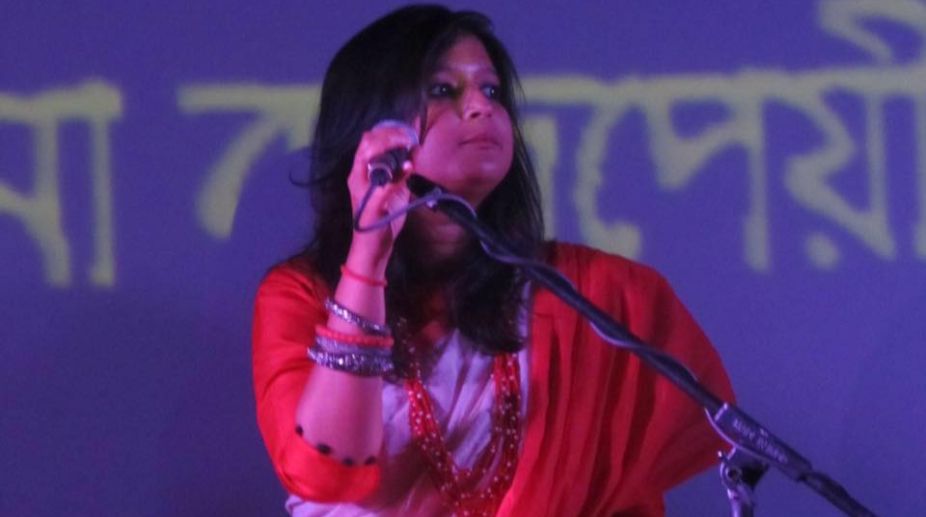Classical arts are here to stay
The ‘Classical Voice of India’ contest strives to make all the young and old practitioners of raag-sangeet aware of the real persona of each raga they choose to present.

Sahana Bajpaie (Photo: Facebook)
Renowned singer Sahana Bajpaie released her first music video Moloyo Batashe to celebrate the festive season with SVF as part of the Swatantra Sahana series.
It was riveting, to say the least, especially because I have hardly worked on a professional music video in recent years. It was interesting to see the kind of work that is involved in making of a music video. As spectators we hardly recognise this, and more often than not, are ready to judge and dismiss.
Advertisement
SVF contacted me when I was visiting Santiniketan, my home, for my annual summer holiday and asked me to do a few songs of my choice. They gave me full independence in choosing the songs and the arranger for the tracks, recording, mixing and mastering. As an independent artist, I hardly get to showcase my work in the audiovisual media. Therefore, I right away took the opportunity. I believe in making music on my own terms, because in my humble opinion, first and foremost the dialectical nature of music is freedom. Unfortunately, an original song is only listened to nowadays if it is used in a film and promoted accordingly. The line between film and independent music has not been blurred but obliterated. The days of the phenomenal singer-songwriters like Kabir Suman, Anjan Dutta, Nachiketa and Shilajit need to be revived. I thank SVF for recognising this.
Advertisement
I don’t really believe in being categorised as a Rabindrasangeet artist. But I suppose I came into the scene with my first album Notun Korey Pabo Boley in 2007, which has put me in that particular category. I have been inspired since I was very young by numerous genres of Bengali music. I have been trained and done a musical album on folk songs Mon Bandhibi Kemonein 2016. Dwijendrageeti was something my father introduced me to as a child and the first song he taught me was Moloyo Batashe.
I sing out of my sheer love for music. The format does not matter. Each form adds to my experience as a performer, even when I sing lullabies to my daughter. But I do enjoy singing to a live audience the most. The stage challenges me to bring out my best self as an artist.
I myself have been working towards it for 15 years. I don’t mind people reinterpreting Rabindrasangeet. And I am in no place to judge. I believe in the audience. It is up to the listeners, which musical production to retain on their playlists and which to discard. But I don’t think there is any apparent harm in reviving, reinterpreting and reclaiming it with some degree of creative originality. Tagore made sure his songs were protected by writing down notations for them, the first one to do so for Bengali music. So, in my opinion, there is hardly any room for the severe anxiety that is attached to the performance, production and reception of Rabindrasangeet.
My international audience is largely made up of the Bengali diasporas, and their love for Rabindrasangeet most of the time surpasses appreciation for any other kinds of songs. Although nowadays there is a noticeable love cropping up for Bengali folk songs, probably because of its propagation through a tremendously popular mu sic reality show platform where the late Kalika Prasad Bhattacharjee worked towards Bengali folk music’s inclusivity in the Bengali music-listening and watching space.
I would hardly call my efforts reviving. I am just performing songs I grew up listening to, learning and loving. I am just trying to present these songs with my band mate Samantak Sinha’s help in a soundscape that the younger generation could connect to. And we will keep on working at it.
Advertisement